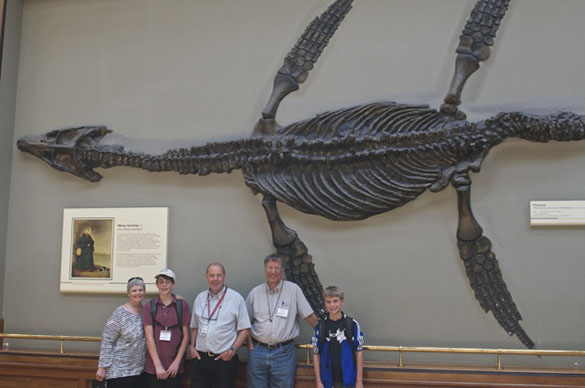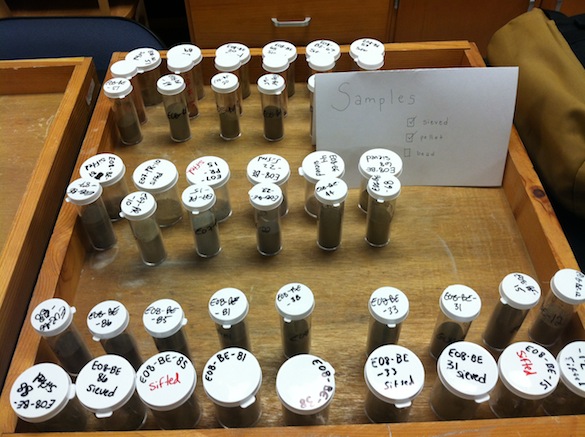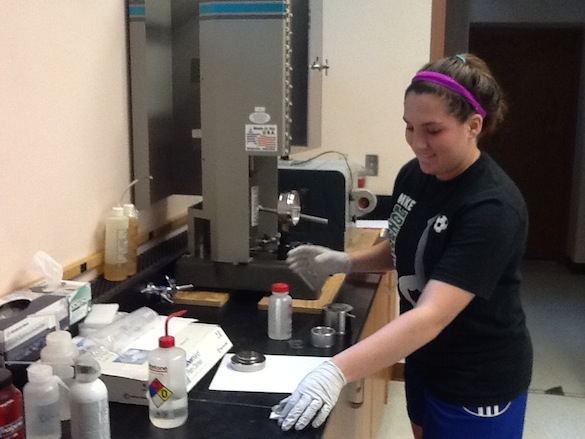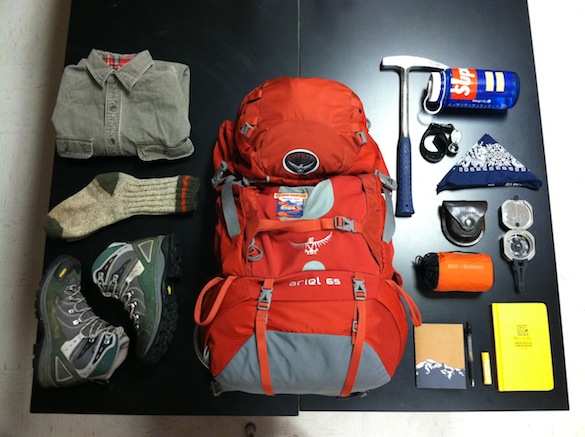Guest Bloggers: Julia Franceschi and Mary Reinthal
A little over a week ago at Spoon market in downtown Wooster, we met our research collaborators from Dickinson College. Although it was the first time we met rising junior Liz Plascencia and Dr. Ben Edwards, after a little talking and a lot of food, it seemed like we had known them for years.
It turns out Liz is just like us: she loves the outdoors, she doesn’t want to get eaten by a bear in the field (*potentially*) and, of course, she loves rocks. It was a good sign for the weeks to come, because together, we prepared mentally and physically for the impending two-week trip to British Columbia, Canada (maybe not mentally, but we definitely went to the gym together).
PREP WORK/ WHY WE ARE GOING:
Pillow Ridge in British Columbia has exceptional pillow lava exposure. These pillows were created by subglacial volcanic features, and were subsequently sheared by a retreating glacier, thus making for an excellent work site to study these lavas. It is our hope to observe, characterize, and model the pillow-dominated area for reconstruction of the stratigraphy, and study a variety of pillow samples for geochemical analysis.
So in the weeks preceding the trip to Pillow Ridge, Wooster students Adam Silverstein, Mary Reinthal, Julia Franceschi (and of course Liz) did a lot of preparation from previously collected samples from the area. We made pressed pellets, fused glass beads, picked glass chips for volatile analysis. It wasn’t all physical work. Sometimes we read papers on pillow lavas for three hours in Broken Rocks over coffee with Dr. Pollock. Sometimes we did equipment checks and learned how to use a Brunton compass. It was a very “independent minds working together”-type atmosphere, but everyday was a lot of fun. See below for an exciting array of pictures portraying the lab work.
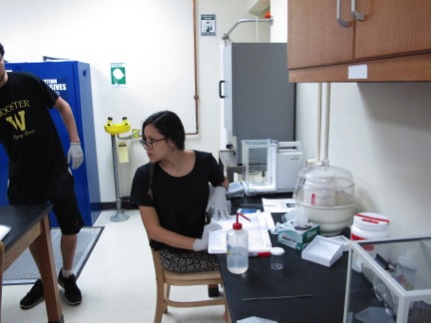
This is the much talked about Liz Plascencia (with 9/10 of Adam Silverstein). They are in the process of weighing samples.
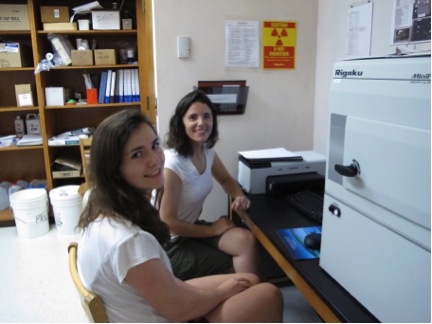
This is a happy teaching moment at the XRD. Pictured is the one and only Dr. Pollock, and one of the tree-ring-lab students, rising sophomore Sarah McGrath.
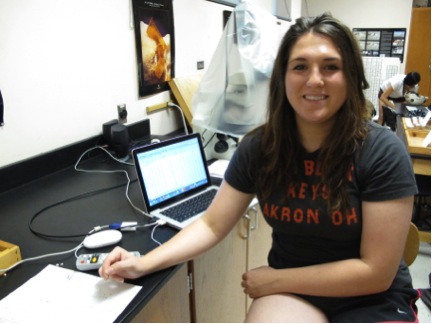
This is rising Junior Mary Reinthal doing major and trace element graphs on Excel. Doesn’t she look happy? Because she loves geology, that’s why.
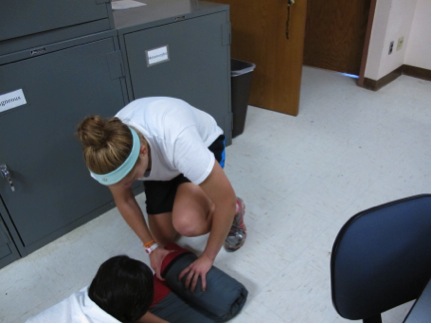
Julia Franceschi of the class of 2016 is packing equipment with incredible skill. This girl knows camping.
T-MINUS 24 HOURS:
Having accomplished a lot in the past couple of weeks together, we are now preparing in the last hours to fly out to Vancouver. Together we make an interesting team. We range in field experience from beginner to advanced. We have put in a lot of work, and are now ready for “roughing it” in the field. We have our tents packed and our ugly sweaters prepared. Ready or not, British Columbia, the Wooster and Dickinson crew are coming. And we are prepared to make memories and come back more knowledgeable than when we left (or at least with better thigh muscles/definition). Here’s to a new adventure!
 DETROIT AIRPORT, MICHIGAN — My long anticipated trip to China has started. I have a bit of a wait in Detroit before boarding a 14-hour flight to Beijing, followed by a connection on to Shenyang. I am visiting China by invitation from geologists at Northeastern University in Shenyang. My host is Yongli Zhang, an invertebrate paleontologist and geologist. Soon after I arrive we fly to Guizhou Province in the southeast of the country to do fieldwork on Carboniferous carbonates, including fossiliferous reef sequences. My job is to assess the hard substrates and, we hope, find a boatload of encrusters and borings. I’ve never been to China, so this will be an adventure in many ways. Everything will be new to me in the oldest of countries.
DETROIT AIRPORT, MICHIGAN — My long anticipated trip to China has started. I have a bit of a wait in Detroit before boarding a 14-hour flight to Beijing, followed by a connection on to Shenyang. I am visiting China by invitation from geologists at Northeastern University in Shenyang. My host is Yongli Zhang, an invertebrate paleontologist and geologist. Soon after I arrive we fly to Guizhou Province in the southeast of the country to do fieldwork on Carboniferous carbonates, including fossiliferous reef sequences. My job is to assess the hard substrates and, we hope, find a boatload of encrusters and borings. I’ve never been to China, so this will be an adventure in many ways. Everything will be new to me in the oldest of countries.









